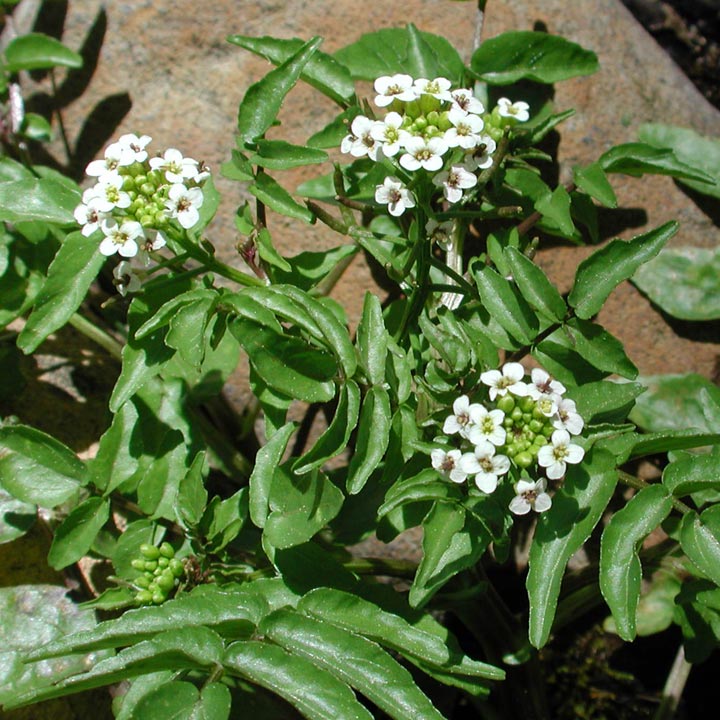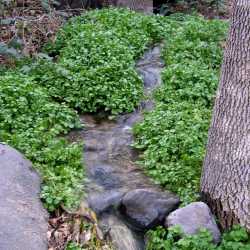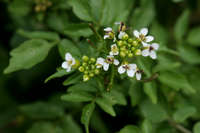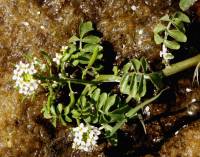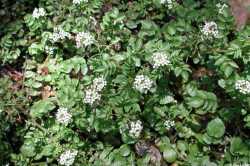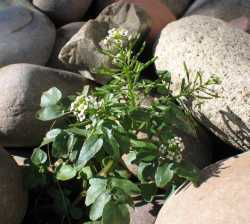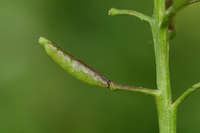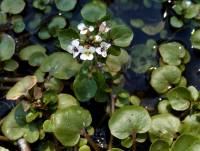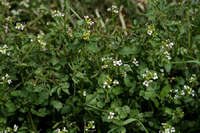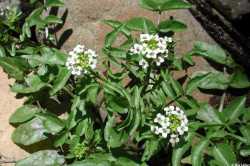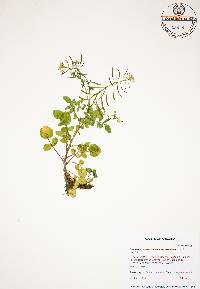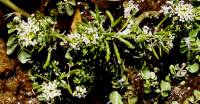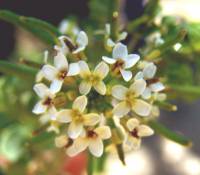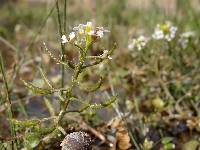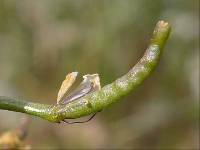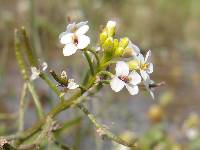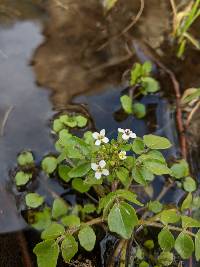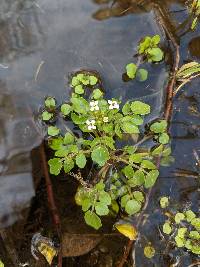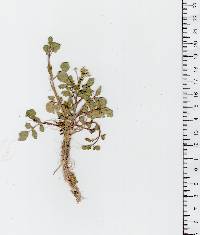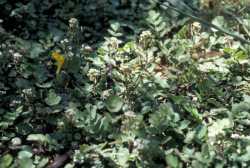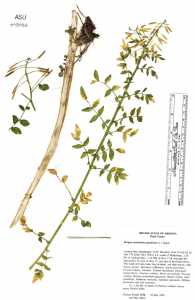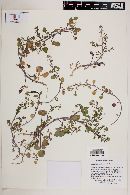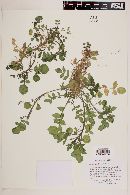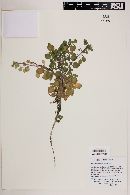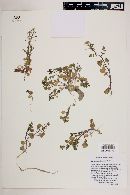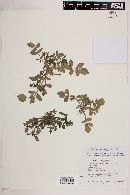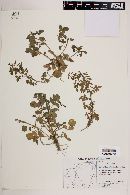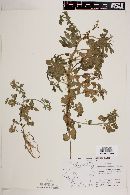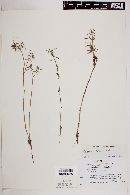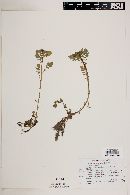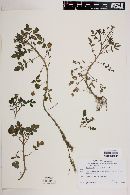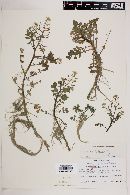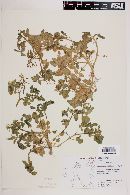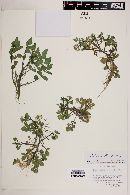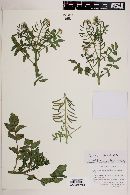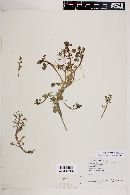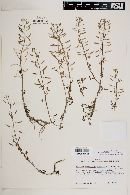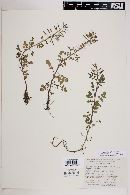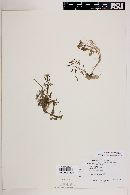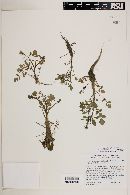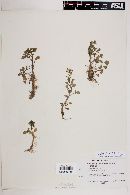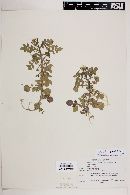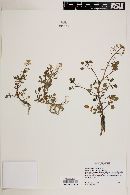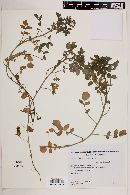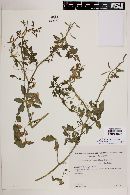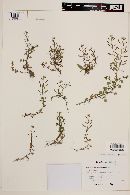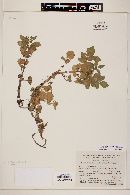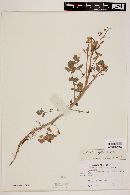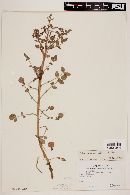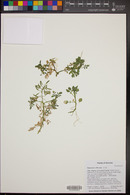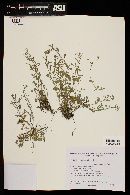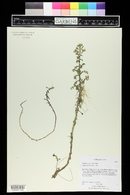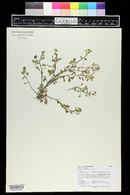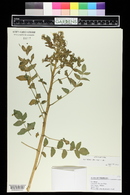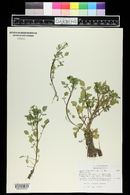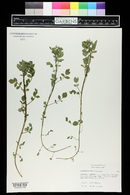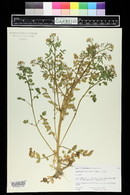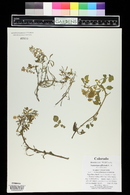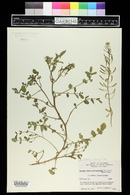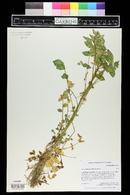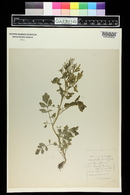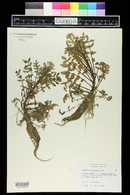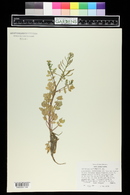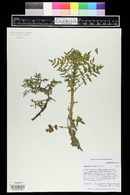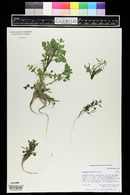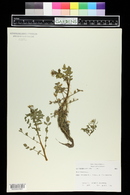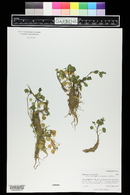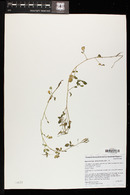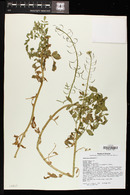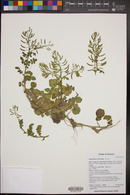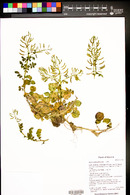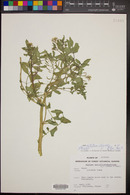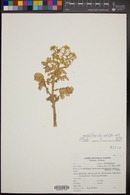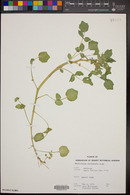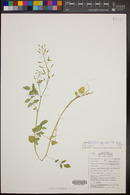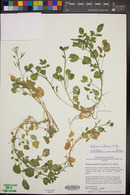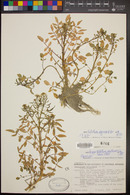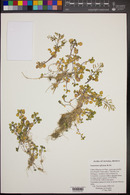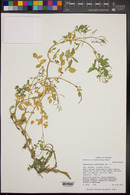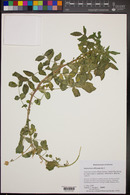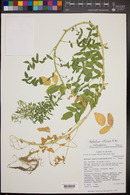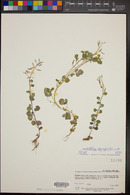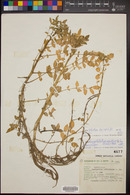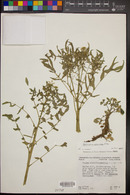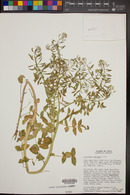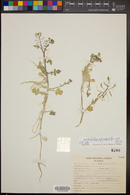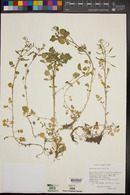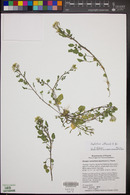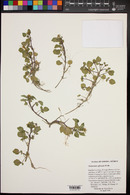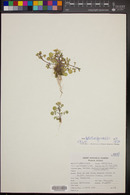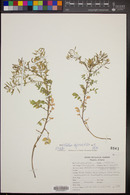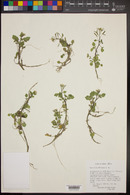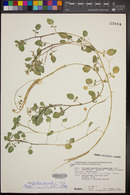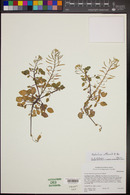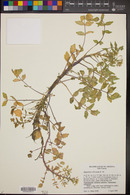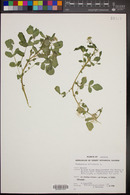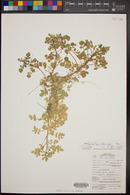Nasturtium officinale
|
|
|
|
Family: Brassicaceae
Watercress, more... (es: berro)
[Nasturtium fontanum (Lam.) Asch., moreNasturtium nasturtium-aquaticum (L.) Karsten, Nasturtium officinale var. siifolium (Reichenb.) W.D.J. Koch, Nasturtium siifolium , Rorippa nasturtium-aquaticum (L.) Hayek, Rorippa officinalis (W.T. Aiton) P. Royen, Sisymbrium nasturtium-aquaticum L.] |
Plants glabrous throughout or sparsely pubescent. Stems 1-11 (-20) dm. Cauline leaves: petiole not winged, base auriculate; blade 3-9(-13)-foliolate, (1-) 2-15(-22) cm; lateral leaflets sessile or petiolulate, rachis not winged, blade smaller than terminal; terminal leaflet (or simple blade) suborbicular to ovate, or oblong to lanceolate, (0.4-)1-4(-5) cm × (3-)7-25(-40) mm, base obtuse, cuneate, or subcordate, margins entire or repand, apex obtuse. Fruiting pedicels divaricate or descending, straight or recurved, 5-17(-24) mm. Flowers: sepals 2-3.5 × 0.9-1.6 mm; petals white or pink, spatulate or obovate, 2.8-4.5(-6) × 1.5-2.5 mm, (base to 1 mm), apex rounded; filaments 2-3.5 mm; anthers 0.6-1 mm. Fruits (0.6-)1-1.8(-2.5) cm × (1.8-)2-2.5(-3) mm; ovules (28-)36-60 per ovary; style 0.5-1(-1.5) mm. Seeds biseriate, reddish brown, ovoid, (0.8-)0.9-1.1 (-1.3) × (0.6-)0.7-0.9(-1) mm, coarsely reticulate with 25-50(-60) areolae on each side. 2n = 32. Flowering Feb-Sep. Flowing streams, ditches, lake margins, swamps, marshes, seeps; 0-3000 m; introduced; Alta., B.C., Man., N.B., Nfld. and Labr. (Nfld.), N.S., Ont., P.E.I., Que.; Ala., Alaska, Ariz., Ark., Calif., Colo., Conn., Del., D.C., Fla., Ga., Idaho, Ill., Ind., Iowa, Kans., Ky., Maine, Md., Mass., Mich., Minn., Miss., Mo., Mont., Nebr., Nev., N.H., N.J., N.Mex., N.Y., N.C., N.Dak., Ohio, Okla., Oreg., Pa., R.I., S.C., S.Dak., Tenn., Tex., Utah, Vt., Va., Wash., W.Va., Wis., Wyo.; Europe; Asia; n Africa; introduced also elsewhere in the New World, tropical and s Africa, Australia. Duration: Perennial Nativity: Non-Native Lifeform: Forb/Herb General: Perennial aquatic or semi-aquatic herb; succulent stems floating, creeping or ascending, rooting at the nodes, 10-80 cm or more long; glabrous. Leaves: Pinnately divided into ovate to orbicular segments, the terminal one the largest, 1-10 cm long, narrowly clasping at the base. Flowers: Racemes without bracts; pedicels spreading to ascending, 5-13 mm long; sepals 2-3 mm long, green or with white tips; petals white, 3-5 mm long, oblanceolate. Fruits: Siliques spreading or curved upward, 1-3 cm long, 2-3 mm wide; style about 1 mm long. Ecology: Found in water or very wet soil; 1,500-7,500 ft (460-2285 m); flowers April-August. Distribution: Introduced to all of N. America, found in every state in the US; south through MEX, C. America and S. America; throughout much of the rest of the world on every continent. Notes: Highly distinct and ubiquitous plant of wetlands; distinguished by the fact it is only in wet places; has creeping, highly branched stems which cover areas, root at nodes and float in water; pinnately compound leaves; inflorescences of white petals and elongated fruits. Greens have a spicy mustard taste. Ethnobotany: Havasupai used for food. Other tribes and cultures around the world eat as greens. Sold in some supermarkets. Etymology: Rorippa is an Anglo-Saxon work rorippen with an uncertain meaning, while nasturtium-aquaticum is from the Latin nasus tortus, a twisted nose. Synonyms: Rorippa nasturtium-aquaticum, Sisymbrium nasturtium-aquaticum, Nasturtium nasturtium-aquaticum Editor: SBuckley 2010, FSCoburn 2015 Perennial; stems submersed or partly floating, or prostrate on mud, freely rooting; lvs of 3-9 obtuse segments, the lateral ovate to rotund, the terminal much larger, usually rotund; fls 5 mm wide, the pet twice as long as the sep; mature pedicels divaricate, 8-15 mm; frs slender, 1-2.5 cm, the beak 1 mm; seeds coarsely reticulate; 2n=32, 48, 64. Native of Eurasia, now widely established in clear quiet water throughout the U.S. and s. Can. All summer. (Radicula n.; Sisymbrium n.; Nasturtium microphyllum; N. officinale) Some botanists now restrict the name R. nasturtium-aquaticum to the "diploid" race (2n=32), and call the tetraploids (2n=64) R. microphylla (Boenn.) Hyl., regarding the plants with 2n=48 as vegetatively reproducing hybrids. The two types differ as follows: Gleason, Henry A. & Cronquist, Arthur J. 1991. Manual of vascular plants of northeastern United States and adjacent Canada. lxxv + 910 pp. ©The New York Botanical Garden. All rights reserved. Used by permission. From Flora of Indiana (1940) by Charles C. Deam Infrequent to rare in the glaciated area of the state, becoming rare or absent south of this area. It is found in the outlets of springs and in ditches and small streams which are fed by springs. Where it is found it is generally very abundant, often forming a complete stand over the entire surface of the water. This is the culinary watercress. …… Indiana Coefficient of Conservatism: C = null, non-native Wetland Indicator Status: OBL |
|
|
|

